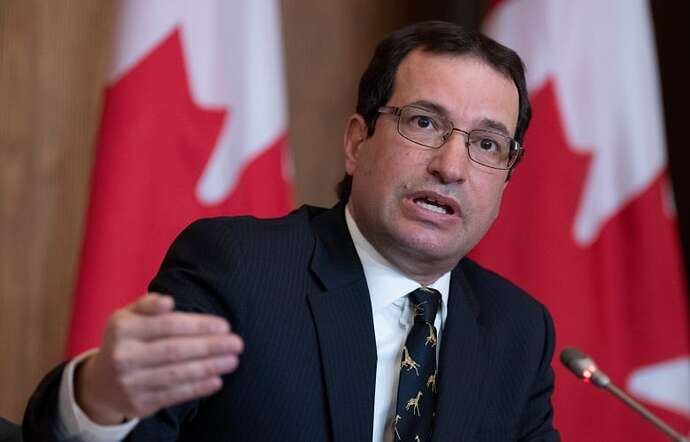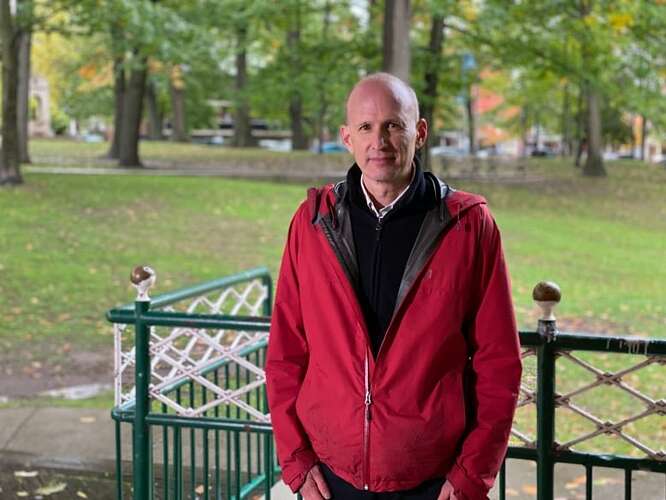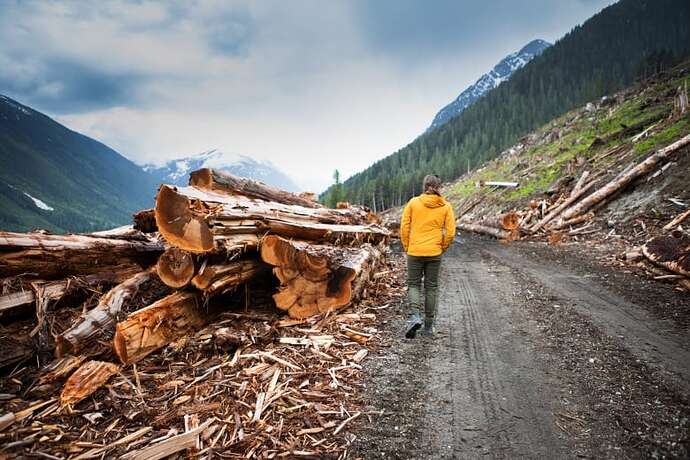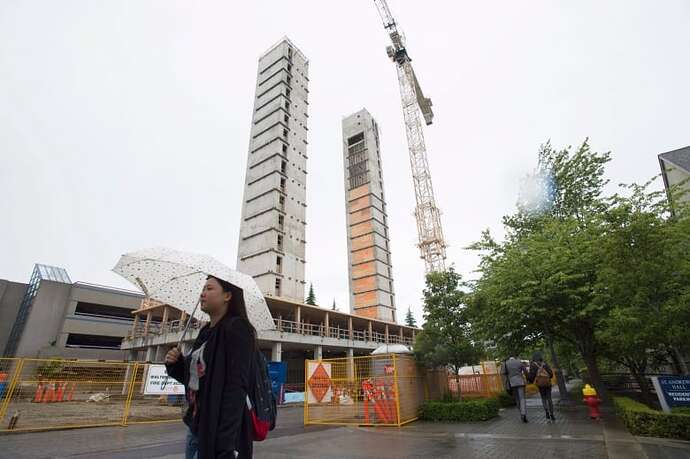How do you tally up forestry’s climate impact? Watchdog calls for more transparency
Report from climate groups pegs forestry emissions at 10 per cent of Canada’s total

Inayat Singh · CBC News · Posted: May 04, 2023
Environmental groups calling for more transparency on emissions from logging in Canada were bolstered by a federal auditor report last month. (Camille Vernet/Radio-Canada)
If a tree is felled in the forest, how should its emissions be tallied?
It depends on who you ask — and according to a number of environmental groups, the true carbon cost of the forestry industry is being obscured by government accounting.
Last month, the Commissioner of the Environment and Sustainable Development, an independent government watchdog within the auditor general’s office**,** bolstered their long-standing argument.
The government “did not provide a full and transparent picture of how Canada’s forests remove carbon from the atmosphere or contribute carbon to it,” said the report from the environment commissioner, referring specifically to the two ministries responsible for tallying forestry emissions: Natural Resources Canada and Environment and Climate Change Canada.
Commissioner of the Environment and Sustainable Development Jerry DeMarco has suggested the government report emissions from forestry more transparently. (Adrian Wyld/The Canadian Press)
Canada did meet international reporting guidelines, but the report cited specific concerns: Emissions from the logging industry were not reported separately, frequent recalculations kept changing the numbers, and there was weak oversight of emissions projections.
According to Nature Canada campaigner Michael Polanyi, it all leads to letting the forestry industry off the hook.
“Canadians kind of are given the impression that industrial logging on a large scale is carbon neutral and the whole policy framework for the government seems to be based on that false assumption,” Polanyi said.
“In fact it should be treated as a high emitting sector and be required to reduce its emissions.”
Michael Polanyi, campaigner with Nature Canada, says accurately reporting forest emissions would lead to better government policy to cut those emissions. (Inayat Singh/CBC)
Source or sink?
Trees, as kids today learn in school, absorb carbon as they grow — so forests are often called carbon sinks.
But when trees die, from logging or other means, their carbon is eventually lost into the atmosphere as the wood is burned or decomposes. This could include wood burned for heat and energy, paper being put into the garbage and long-lived wood products like furniture that have reached the end of their lives and ended up in waste landfills.
Polanyi’s group, along with U.S.-based Natural Resources Defense Council, has tried to calculate the emissions related to forestry using figures in Canada’s national inventory report, the annual accounting of the country’s greenhouse gas emissions. For 2021, they estimate forestry emitted 73 megatonnes of CO2-equivalent — almost the same as emissions from the province of Quebec.
Old growth trees, seen here near Revelstoke, B.C., store a lot of carbon which is released when they are burned or decompose. (Camille Vernet/Radio-Canada)
The official inventory itself gives a different picture.
Canada’s inventory report has no separate category for forestry. Instead, it uses a category called land use, land use change and forestry (LULUCF), which is aligned with UN reporting standards, and includes detailed information on all the carbon emitted and absorbed from land use — managed forests, croplands, wetlands, wood products from logging.
In 2021, the inventory report said the LULUCF sector was, overall, not a souce of emissions but rather a carbon sink of 17 megatonnes.
In their aim to look specifically at forestry, the environmental groups’ estimate includes the amount of carbon contained in trees that have been logged in the ‘managed’ forest — the parts of forest that see human activities like logging, wildfire suppression and pest-control.
They deducted the carbon sucked in from the air by replanted trees on previously logged areas and the carbon stored in long-lived wood products that are still in use.
What the estimate doesn’t include are trees that the environmental groups argue are being unfairly used to offset the emissions from forestry: trees that have regrown naturally after wildfires and other disturbances, and reached “commercial maturity” — roughly 80 years old or more.
In 2021 the national inventory estimated these trees absorbed 79 megatonnes. The disagreement lies in whether these trees, left standing, should be included in the totals — making forestry look like an emissions sink.
“It appears that the government is not acknowledging that significant concern which has huge implications for climate policymaking and forest policymaking and Canada’s ability to meet its 2030 climate targets,” Polanyi said.
“Right now there’s quite a prevalent myth that’s perpetuated by the logging industry and also kind of perpetuated by the government that forestry including logging is a climate solution,” Polanyi said.
He said it matters to calculate forestry emissions separately so that “government policymakers can base their policy decisions on solid evidence about what are the emission levels from all sectors of the Canadian economy.”
The remains of a cut block is seen near Port Renfrew, on southern Vancouver Island, in 2021. Canada’s forest carbon accounting system is a complex model that estimates the carbon in harvested trees, along with the carbon removals from the replanted trees and many other sources to get an accurate picture of forest emissions. (Jonathan Hayward/The Canadian Press)
Can logging emissions be counted separately?
But experts are undecided on whether that’s a fair way to count forestry emissions — or even if forestry emissions can be separated out from the rest of land use.
“The argument of the forest management community is that forest management is much more than logging. [It includes] fire suppression, many other stand-tending activities,” said Werner Kurz, a scientist who leads the development of Canada’s exhaustively detailed forest carbon accounting system.
“We’re including in our reporting the emissions and removals associated with all aspects of forest management.”
Kurz has spent much of his career working on forest emissions accounting and contributing to many reports of the Intergovernmental Panel on Climate Change. He says that in the fight against climate change, it’s especially important to get emissions from forests right, because forest products like wood have a big role in replacing materials like concrete and steel — whose production relies on using large amounts of fossil fuels.
A building under construction at the University of British Columbia campus in Vancouver in 2016 which used mass timber. Wood products can displace more carbon-intensive materials like concrete and steel, and the carbon stored in those long-lived wood products is reflected in Canada’s greenhouse gas inventory. (Jonathan Hayward/The Canadian Press)
“The land sector is a very holistic process that you need to look at in its entirety, not try to identify a singular activity like logging,” he said.
The federal government says it hears the concerns of groups that have criticized the way Canada accounts for forestry emissions, and is reviewing its practices — but it has not committed to reporting forestry emissions separately.
It all points to a central disagreement on what “forestry emissions” even are.
“These are the emissions associated with humans making use of wood products. So is that a logging emission or is that the emission associated with the use of wood products?” Kurz said.
“We can have lengthy debates on that, but I think the most important thing is that forestry and forest management is much more than logging.”
CBC News asked both Environment and Climate Change Canada and Natural Resources Canada whether they were considering calculating forestry emissions separately, and did not receive an answer to the question.
However, in their response to the commissioner’s report, the departments said that “issues raised by environmental groups will be clearly addressed” in a review plan for improving forest carbon estimates, which will be released sometime in the future.





